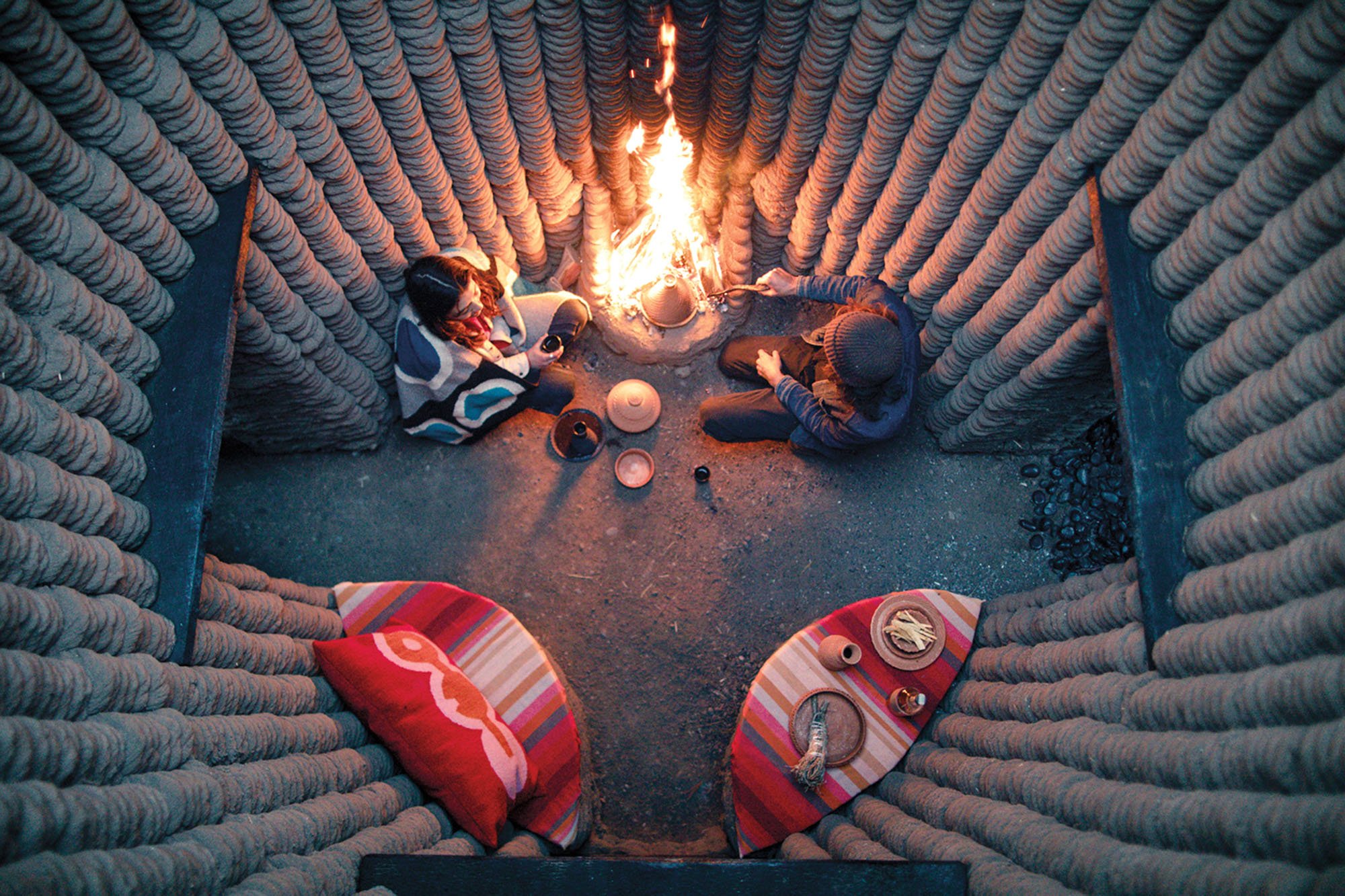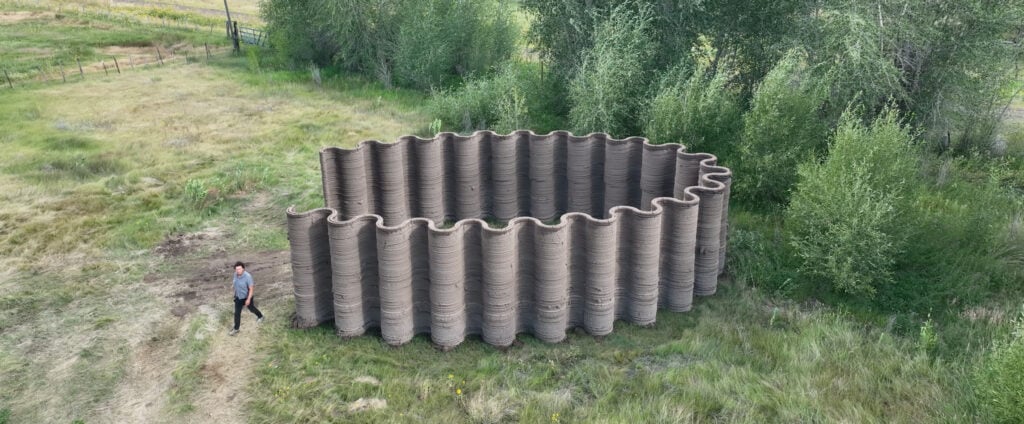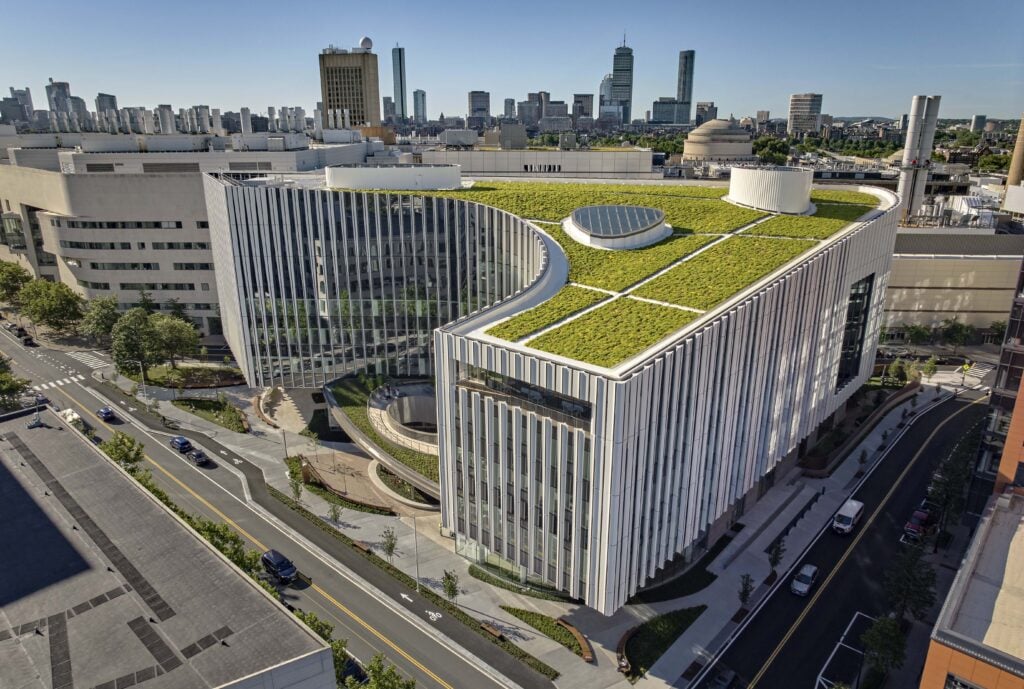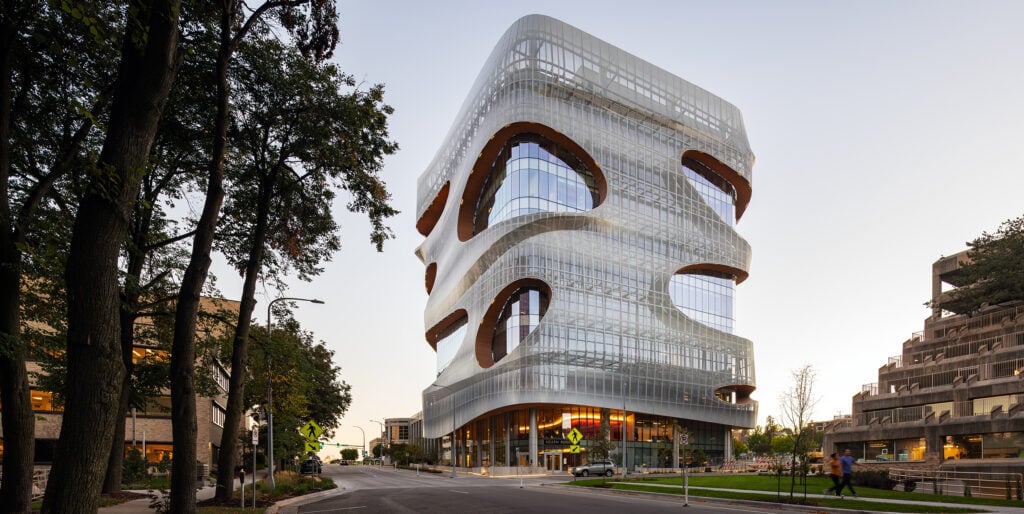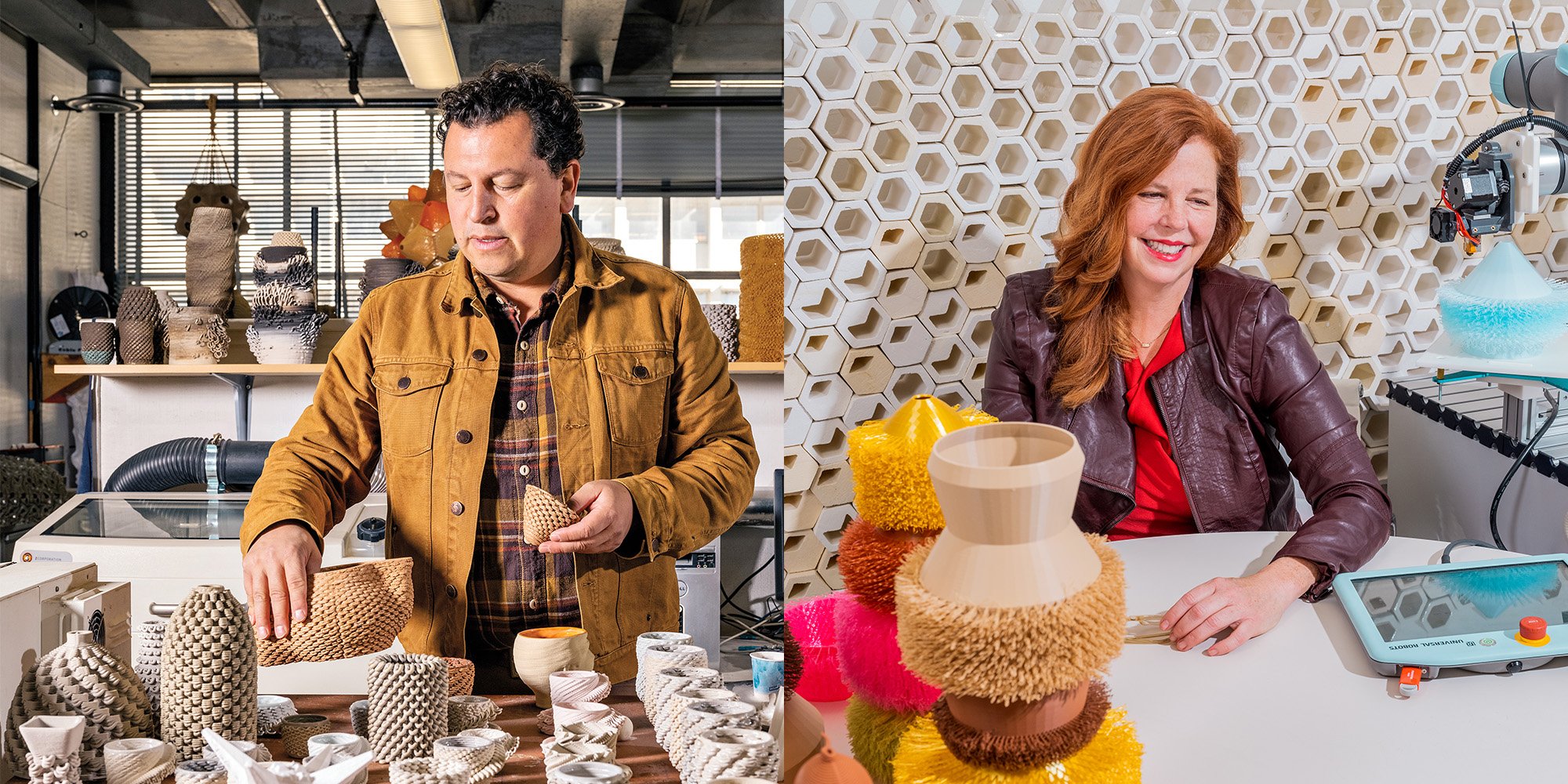
February 13, 2023
Rael San Fratello 3D Prints Architecture with a Political Edge
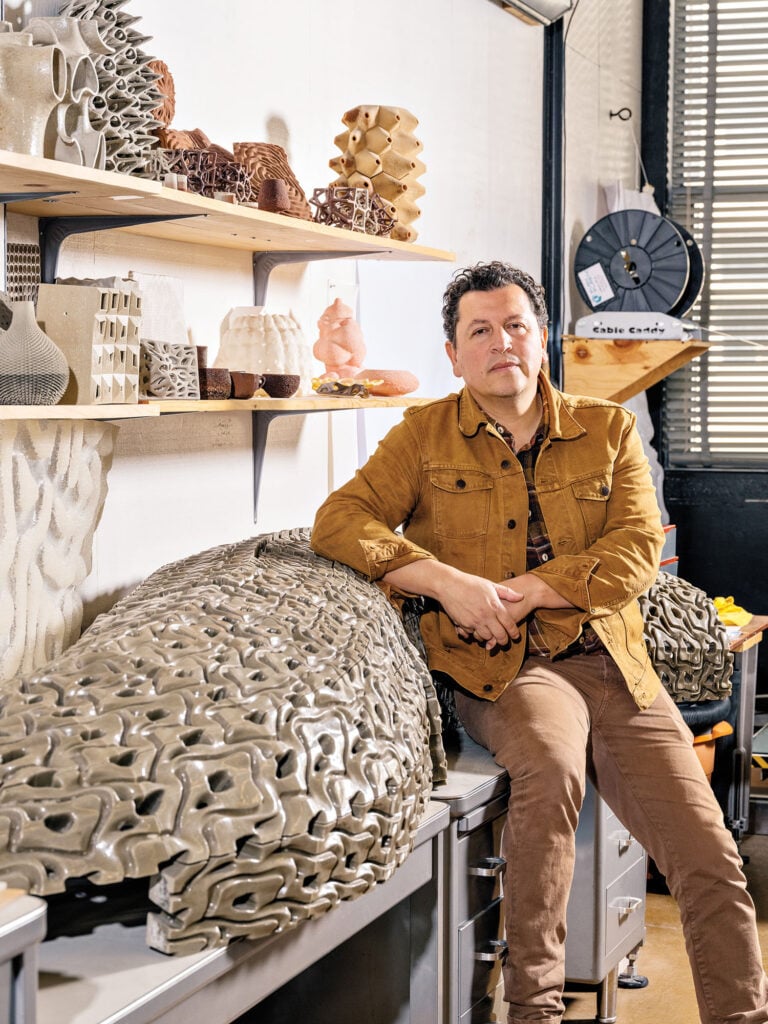
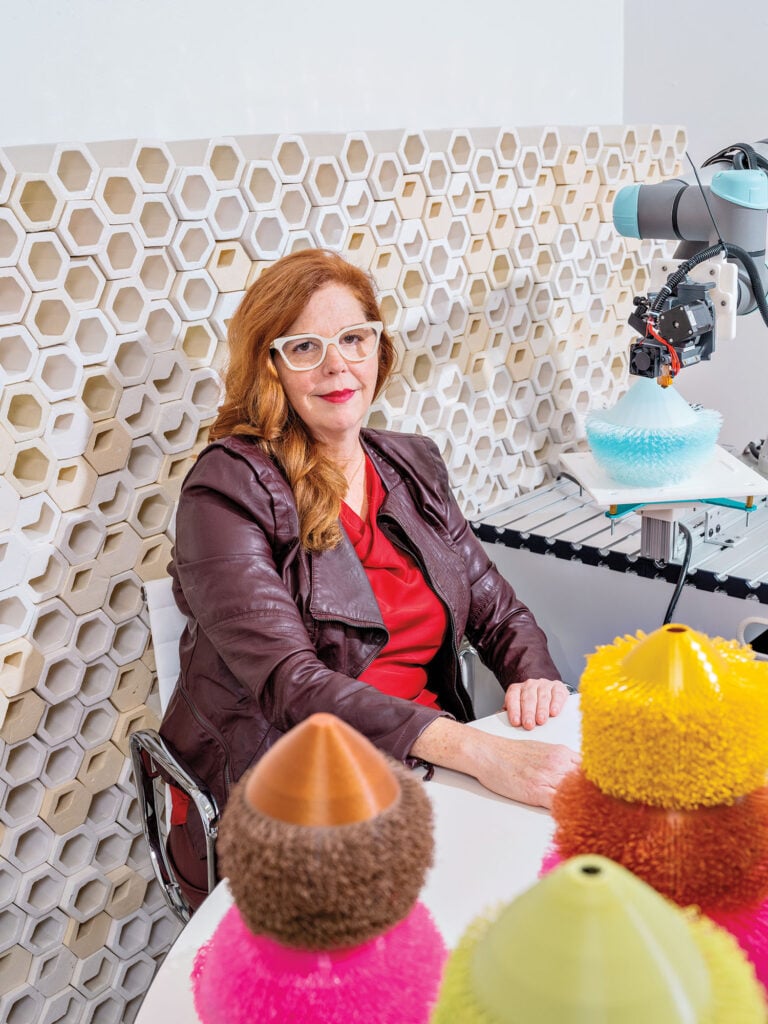
Rael San Fratello Explores the Border Through Design
Ronald Rael and Virginia San Fratello, the two principals of Oakland, California–based design studio Rael San Fratello, aren’t traditional architects. Rather than designing buildings for construction, their main preoccupations are about dismantling structures and building new ones that connect us. Over the past two decades, their politically charged projects have made a persuasive case for rethinking everything from American border control to building materials. “There’s a lot of points of entry to their work for so many people. They don’t allow themselves to be boxed in by labeling themselves, and they will use any tool at their disposal,” says Brittany Corrales, curator at the Arizona State University (ASU) Art Museum, which recently held a solo exhibition of the firm’s work.
The exhibit’s two new commissions, House Divided and House United, reference the U.S.–Mexico border wall and serve as a follow-up to the firm’s viral 2019 Teeter-Totter Wall, in which they penetrated the border wall near El Paso, Texas, with seesaw planks in an act of rebellious play. Representing how communities have been split, House Divided is a bifurcated structure in which the furnishings themselves (a dining set, a bed) have been halved. The two cultures come to life in telling details: The Mexican bedroom has a wooden crucifix on the wall, while the American half has a throw pillow that reads “Have a little faith.”
A companion piece, House United, is an open-air pavilion with a parametrically sculpted roof of steel angles and walls of adobe blocks. The installation is not purely an artistic expression—it is intended for actual use as a communal gathering space at Casa de la Misericordia, a migrant shelter in Nogales, Mexico. Rael and San Fratello have been doing pro bono work there and knew of a mountain of steel originally slated for building the border wall that was sitting in a Phoenix steel yard. “It seemed so fitting to use this hostile material to create a roof that people could come together underneath,” says San Fratello. (Post-exhibit, the pavilion is heading south to the shelter.)
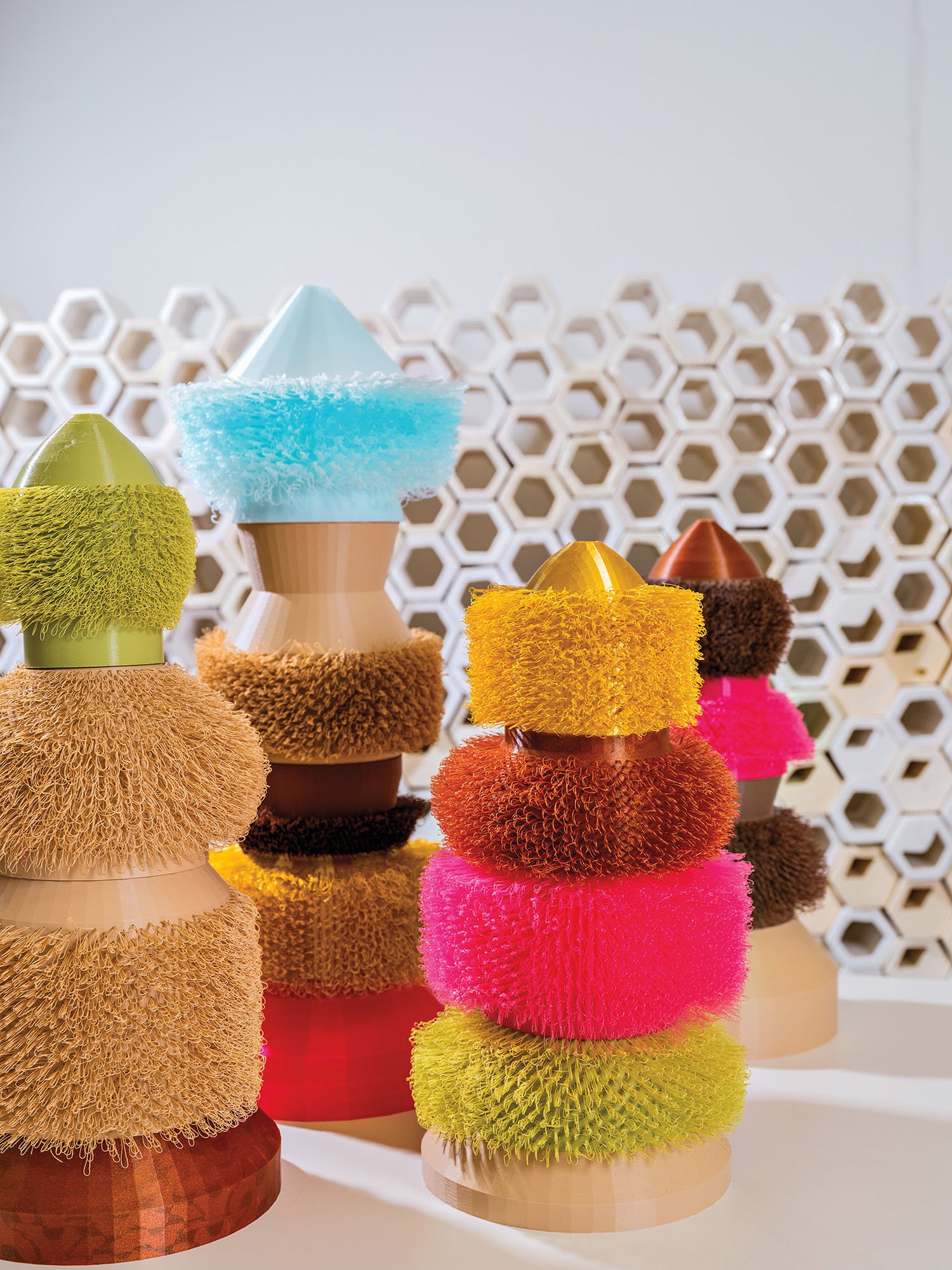
High-Tech Machinery and Ancient Traditions
Early on in their career, the two realized how powerfully architecture can communicate political ideas. In 2005, they designed Prada Marfa, an adobe replica of a Prada boutique, a collaboration with German-based artist duo Elmgreen and Dragset. Sited incongruously in the remote borderlands of West Texas, the installation was a commentary on the growing economic inequality between north and south. For Rael, who grew up in rural Colorado in an adobe house that his great-grandfather constructed, building with earth links him with past generations and a family history that spans Indigenous, Spanish, Mexican, and U.S. land ownership. “I continue to practice those earthen building traditions in contemporary ways, both by hand and with digital tools,” says Rael, who has built several traditional hornos, or mud ovens, reintroducing this iconic symbol of food and connection.
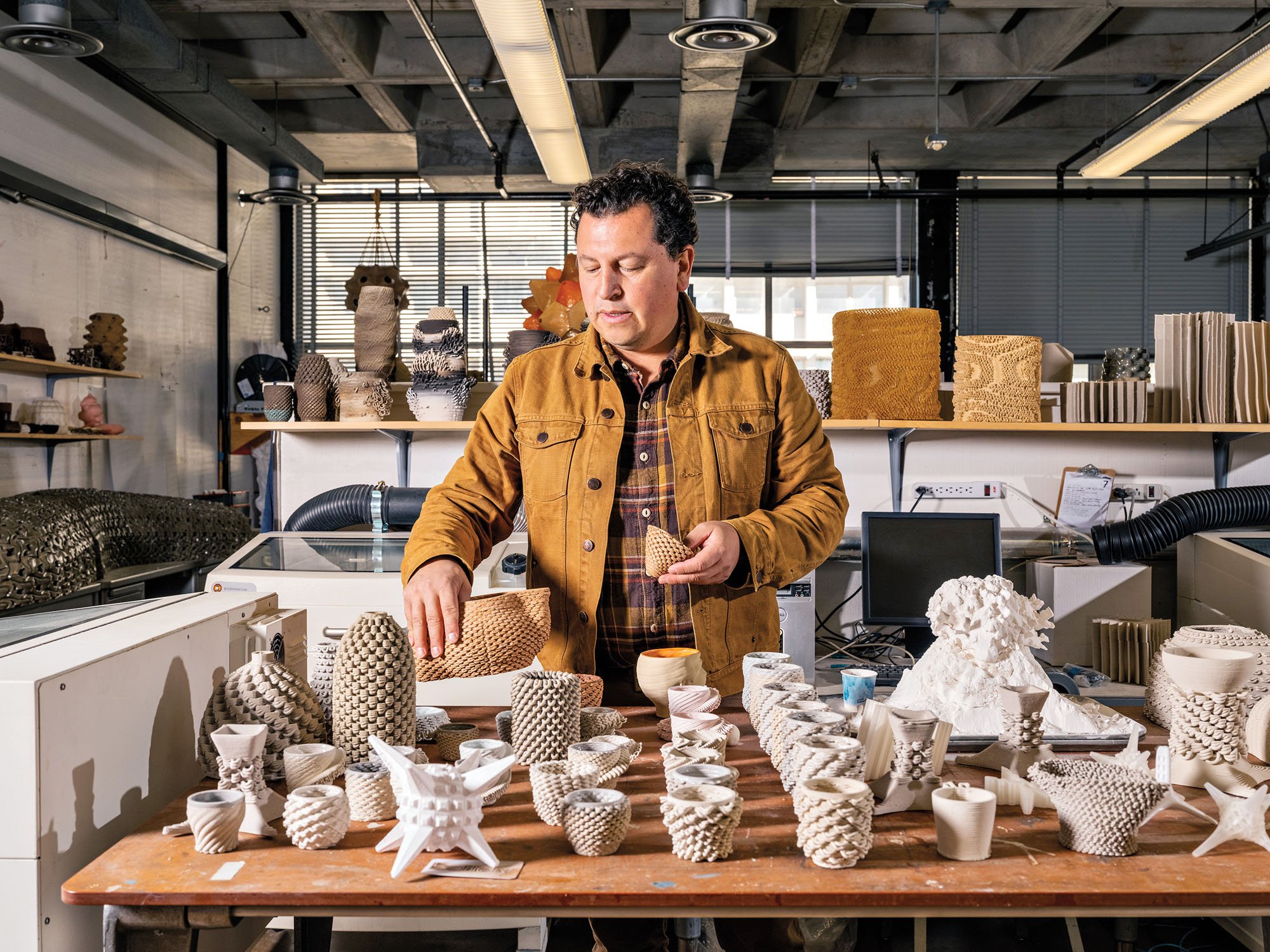
Since 2008, Rael and San Fratello have been 3D-printing clay as an extension of an ancient practice that predates notions of statehood. They’ve also brought salt, curry powder, and other unlikely materials into the realm of contemporary design. These designer-machine collaborations have a winning playfulness (they’ve made a globular vessel from cotton candy and “Coffee Coffee Cups” from coffee grounds) and are underpinned by their deep belief that the ability to design should be widely accessible and utilize low-cost or freely available materials. “The construction industry generates tremendous waste material,” points out San Fratello, who grew up in Savannah, Georgia, and would “cruise timber” with her father, a forester. “How do we take all that sawdust and create something new?”
Both Rael and San Fratello are full-time professors at public universities (University of California, Berkeley, and San Jose State University, respectively) and have made many of their printer recipes and “hacks” publicly available. “They take their work as educators very seriously and are trying to make these technologies easier to use,” says Christina De León, associate curator of U.S. Latino design at Cooper Hewitt, Smithsonian Design Museum, who spent several weeks at a time observing their patient trial-and-error process for the 2022 documentary Mud Frontier: Architecture at the Borderlands.
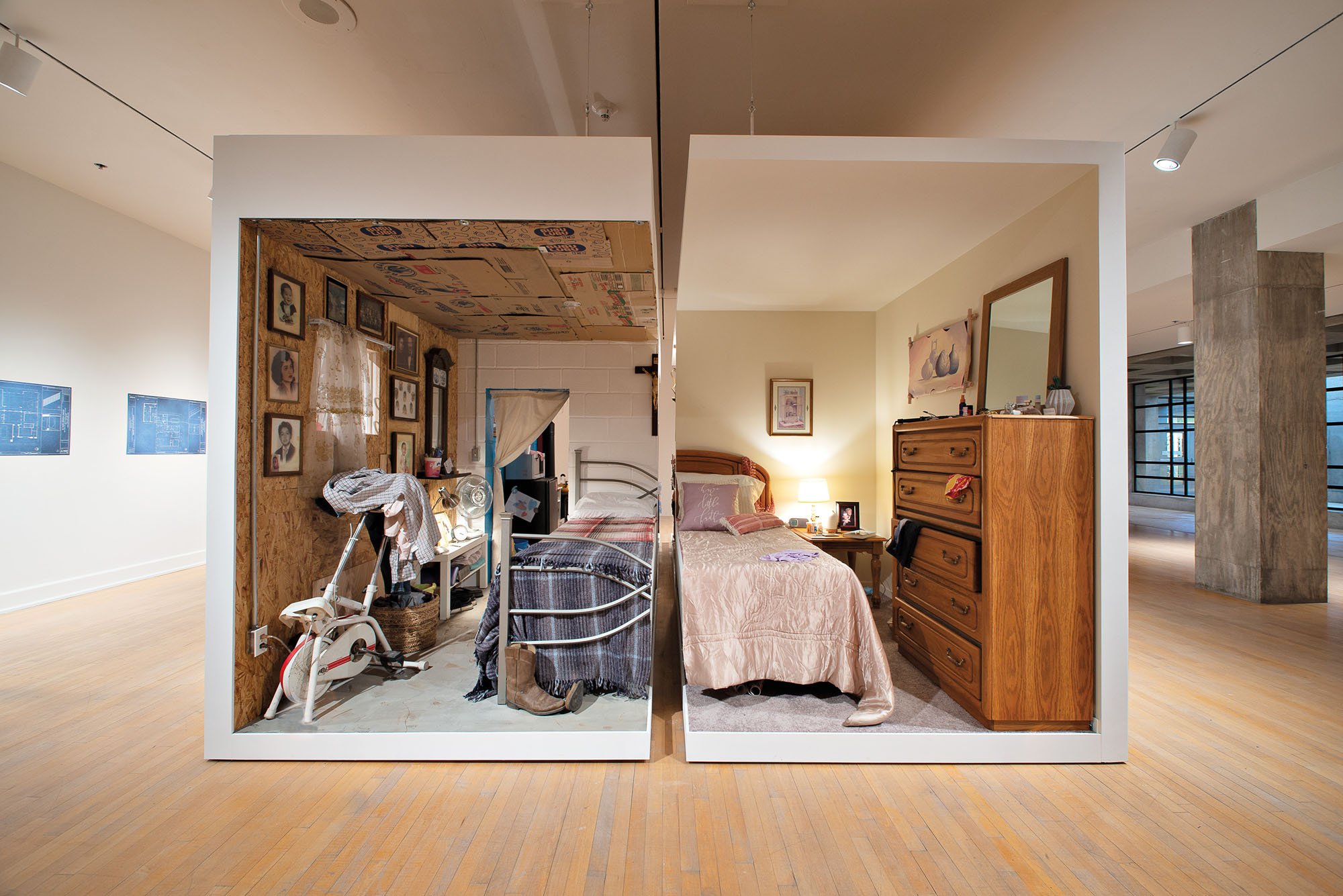
Inside Rael San Fratello’s 3D-Printed Adobe Structures
On a larger scale, robotic construction has been touted for its potential to create better-designed, more cost-effective housing. Rael San Fratello recently completed some of the world’s first 3D-printed adobe structures, serving as proof of concept for full-scale homes. Casa Covida, whose name is a Spanish-language play on “COVID” and “living together,” is an evocative three-chamber structure that is open to the sky. Each room is eight feet in diameter—reflecting the capabilities of the robot arm—and 12 feet high. The exaggerated height is for architectural impact, but also to demonstrate a benefit of 3D printing. “Adobe brick is really heavy, and you may only have the ability to lift it to a certain height, but the robot can keep going,” notes San Fratello.
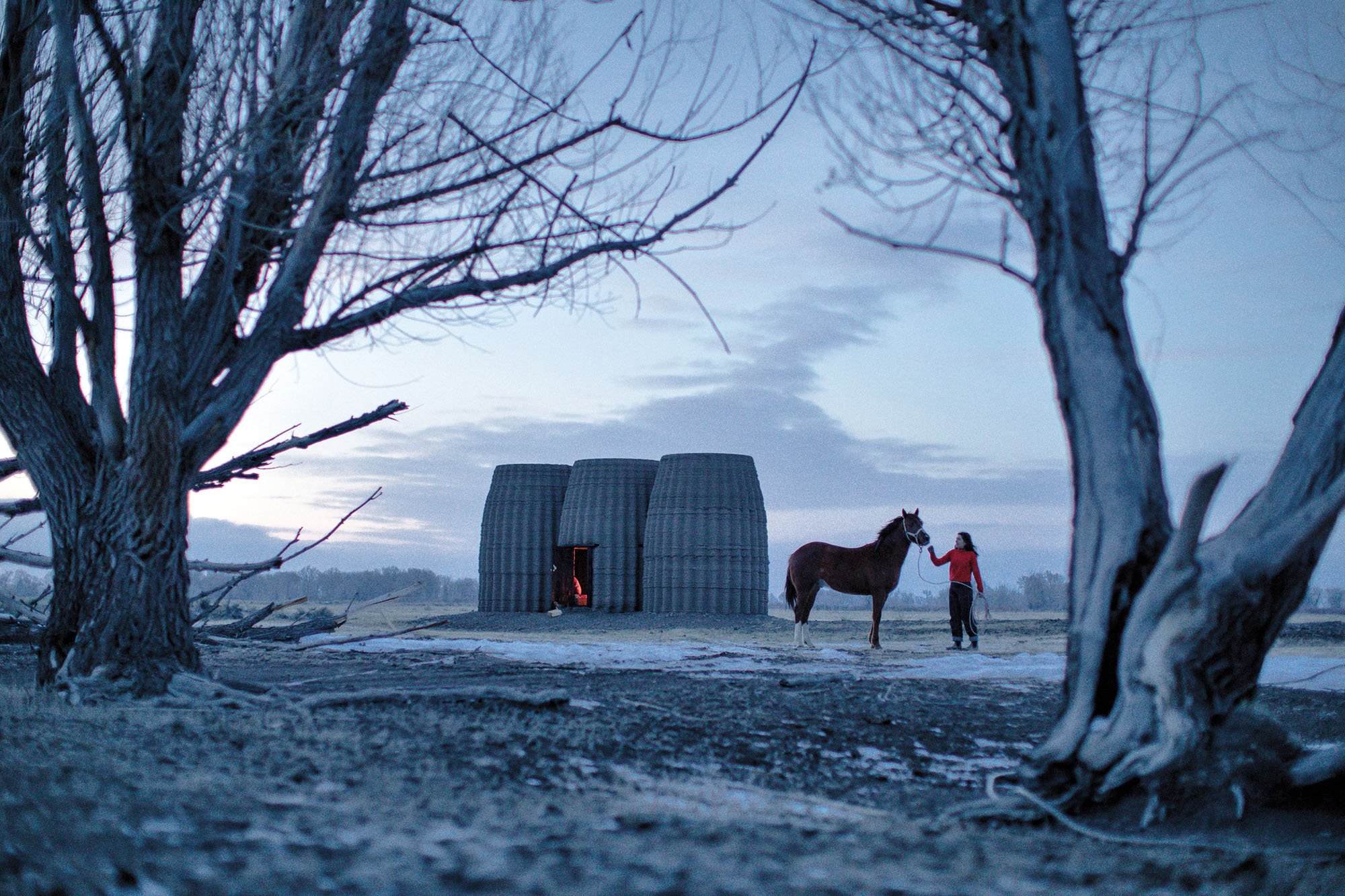
Casa Covida was completed at the end of 2020, and the robot arm has since been deployed to build “skylos” with soaking tubs at the Frontier Drive-Inn in southern Colorado. The open-air structures are the first 3D-printed earth buildings that the public can experience. Formed from 1,200 layers, the skylos look woven, as if they were large clay baskets. “People have been making houses and spaces from dirt for 10,000 years. When you go inside, you feel connected to the experience of becoming human,” says Rael. “It feels amazing.”
Psychological studies have shown that when people feel a sense of awe, they feel more connected and part of a larger whole. The architects have embraced the job of creating those transcendent moments, writing, “We have to create disruptive situations that bring attention to our work—otherwise, no one would ever know who we are or what we do…. We like to discover overlooked places and try to do the most with the least.” By doing the heavy lifting to bring their flights of imagination to life, they remind us not to be constrained by the reality that separates us.
Would you like to comment on this article? Send your thoughts to: [email protected]
Related
Profiles
Ronald Rael’s Solution to the Housing Crisis? Muddy Robots
The Berkeley, California–based architect’s new venture blends ancestral and artificial intelligence to create 3D-printed houses out of earth.
Projects
Payette’s Ragon Building Redefines Biomedical Research Spaces
A collaboration between MIT, Harvard, and Mass General Hospital, the new institute advances vaccine development—including efforts toward an HIV cure.
Projects
HDR Wraps Mayo Clinic Lab in a Dynamic Double-Layered Facade
The building’s striking exterior reduces solar gain, while its “risk-based” interior zoning ensures efficiency in research.



